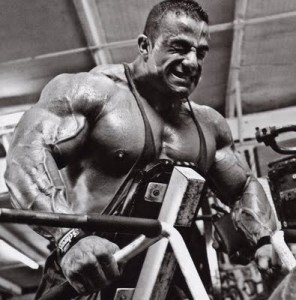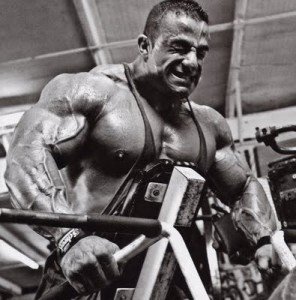>
Free weights and weight machines each have advantages, but together they serve the same general purpose.
Let’s examine the pros and cons of each:
Machines are safer – There are four principal situations in which most weight-training injuries occur.
1. The point of maximum stress overtaxes you.
2. You bounce or otherwise cheat the weight up.
3. The weight travels outside of the exercise’s ideal path.
4. You fail to balance the weight.
The first two can occur whether you use free weights or machines. With a machine, however, there is less of a chance that you’ll be further injured by the falling weight.
Also, unlike when using free weights, it is much easier to maintain balance and replace the weight if you suddenly find yourself overtaxed in the middle of a rep.
Although machines are inherently safer than barbells and dumbbells, safety should not be that great an issue. Free-weight lifts are not dangerous when performed correctly after stretching and warming up, and with at least one spotter nearby.
Free weights develop stabilization – Unlike weight-lifting contraptions, free weights force you to stabilize the resistance throughout the lift.
Dumbbell shoulder presses, for example, stress the muscles of the shoulder girdle not just because you press the weight up, but also because you must balance the dumbbells throughout the entire length of the movement, all the way up and all the way down.
Having to balance the weight is not always an advantage. At times, it means you will not be able to go as heavy. Most trainers prefer barbell bench presses to the dumbbell variety because they don’t have to struggle so much to balance the left and right sides and can therefore go heavier.
But most also prefer barbells to machines. If you use only machines to work out, you will miss out on the stabilization effect. Balance makes free-weight exercises slightly superior for gaining muscle and strength over a machine equivalent.
Machines are easier to use – Some modern machines can be quite complicated to the uninitiated, but maintaining good form with machines tends to be easier than with free weights.
On a machine, it’s generally easier to adjust the amount of weight being used. You merely move a pin, as opposed to either tracking down dumbbells or sliding plates on and off a bar.
Free weights are more versatile – Because they often lock you into a specific motion, machines don’t allow for much variation. Although you can sometimes change your position when using a machine, the path of the weight is predetermined.
With free weights, you can easily alter the trajectory of lifts such as side laterals and triceps extensions, thus placing a unique emphasis on the muscles.
Finally, because machines are designed for someone of average height, if you’re more along the lines of either Danny DeVito or Shaquille O’Neal, it may be impossible to use them properly. And in some gyms, the weight stacks are too light for hard-training bodybuilders.
Why you need both – If asked to choose between machines and free, most bodybuilders would probably pick free weights. It’s accepted wisdom that old-fashioned iron is superior for gaining mass. Comparing one similar exercise to another, this is generally true, and you can certainly get a great upper-body workout with only free weights.
However, machines are nearly mandatory for training hamstrings and calves, and it is unlikely most bodybuilders would build better quadriceps using only barbells and dumbbells rather than the variety of thigh machines a well-equipped gym would offer. For this reason, if forced to choose one or the other, remember that you can actually train all of your body more thoroughly using machines exclusively.
Luckily, you need not choose between machines and free weights. You require both, because some free-weight exercises cannot be duplicated with machines and vice versa.
source:musclediscussion.com
Tags: TRAINING
This entry was posted
on Saturday, May 22nd, 2010 at 3:09 pm and is filed under TRAINING.
You can follow any responses to this entry through the RSS 2.0 feed.
You can leave a response, or trackback from your own site.

